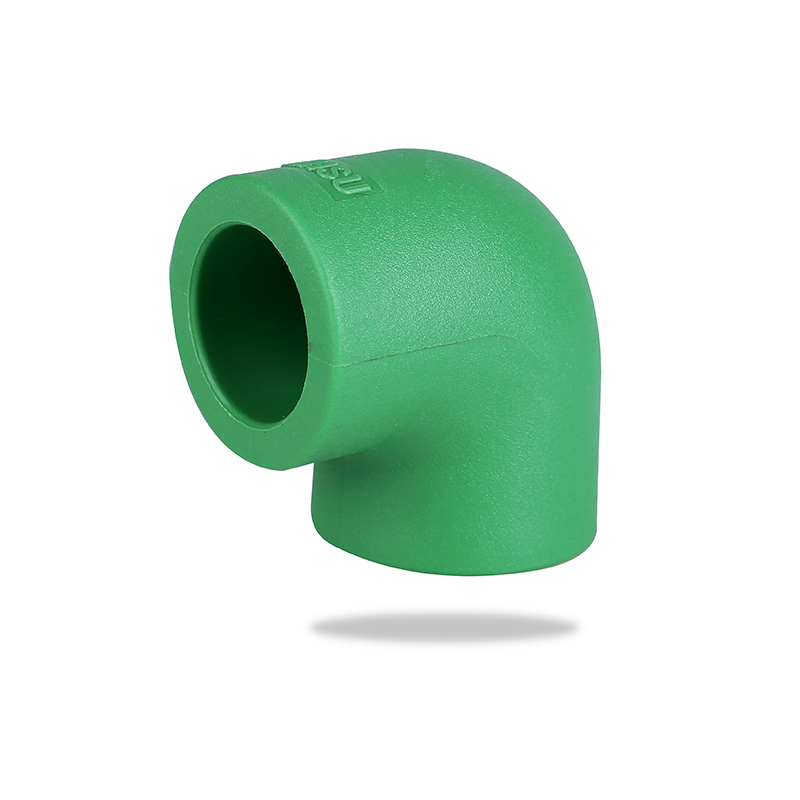When installing a PPR Elbow 90 Degree in a narrow space, ensuring the reliability and convenience of the connection requires careful planning, proper tools, and adherence to best practices. Below are detailed methods and recommendations to achieve this:
Optimize Pipe Layout
Plan the Pipe Route Carefully:
In narrow spaces, minimize unnecessary elbows by prioritizing straight pipes or 45-degree elbows to reduce installation complexity.
Advantage: Fewer connection points mean fewer potential leak risks.
Select the Right Size of Elbow:
Choose a suitable 90-degree elbow based on the available space (e.g., standard radius or short-radius elbows). Short-radius elbows save space but may increase flow resistance.
Use Appropriate Installation Tools
Portable Heat Fusion Machine:
In tight spaces, use lightweight, compact heat fusion machines that are easy to carry and operate.
Recommended Features: Models with extendable or rotating handles for easier access in confined areas.
Extension Rods or Long Clamps:
If the space is extremely limited, use clamps with extension rods to allow heating and welding from a distance.
Tool-Free Connection Options:
For certain applications, consider using press-fit or quick-connect PPR fittings (if compatible with the system), reducing reliance on heat fusion equipment.
Ensure Welding Quality
Control Welding Parameters Precisely:
In narrow spaces where operation can be challenging, it’s crucial to strictly control key welding parameters such as temperature, time, and pressure.
Temperature: Typically 260°C ± 10°C.
Time: Adjust heating time based on pipe diameter (usually a few seconds to several dozen seconds).
Pressure: Apply adequate pressure during welding to ensure full contact between components.
Avoid Underwelding or Overwelding:
Underwelding: Insufficient heating time or pressure can lead to weak connections.
Overwelding: Excessive heating time or temperature can damage the material and compromise connection strength.
Inspect Weld Quality:
After welding, gently pull the joint to confirm its stability. Use specialized testing tools if necessary to verify seal integrity.
Enhance Installation Convenience

Preassemble Components Outside:
Preassemble parts of the piping system outside the narrow space, then move the assembled unit into position. This significantly reduces on-site work time.
Note: Leave sufficient allowance in preassembled components to accommodate field adjustments.
Modular Design:
If feasible, use modular piping systems that integrate multiple elbows and straight pipes into a single prefabricated unit, simplifying on-site assembly.
Flexible Hose Transition:
Use flexible hoses (e.g., metal bellows) at one side of the narrow space to connect PPR pipes, providing greater flexibility during installation.
Ensure Long-Term Reliability
Strengthen Support Fixtures:
Pipes in narrow spaces are more susceptible to external vibrations or stresses. Add supports or clamps to secure elbows and pipes, improving system stability.
Account for Thermal Expansion:
PPR materials have a certain coefficient of thermal expansion. Reserve appropriate expansion gaps in narrow spaces to prevent deformation or loosening caused by temperature changes.
Regular Inspections:
Even in tight spaces, regularly inspect the sealing and stability of elbow connections to identify and address potential issues early.
Additional Considerations
Ventilation and Safety:
Ensure good ventilation during installation in narrow spaces and wear protective gear (e.g., gloves, goggles) to avoid burns or other accidents.
Avoid Excessive Bending:
Do not apply excessive bending force to PPR pipes during installation to prevent deformation or stress concentration.
Follow Standards:
Strictly adhere to relevant standards (e.g., GB/T 18742 for cold/hot water polypropylene pipe systems) to ensure safe and reliable connections.
When installing a PPR Elbow 90 Degree in a narrow space, optimizing the pipe layout, selecting appropriate tools, controlling welding quality, and adopting prefabrication or modular designs can effectively enhance both the reliability and convenience of the connection. Additionally, reinforcing supports, accounting for thermal expansion, and conducting regular maintenance are essential for long-term system stability. These methods improve installation efficiency while reducing future maintenance costs.

 简体中文
简体中文 English
English русский
русский Español
Español Français
Français عربى
عربى Português
Português












